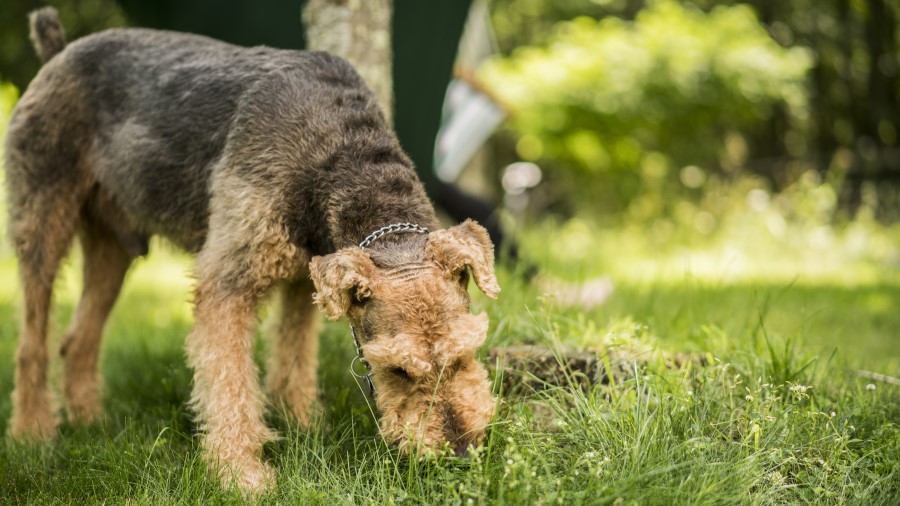What do I do if my dog is stung by a wasp or bee?
These are likely the first words that come to mind when your pet has an accident or a sudden health issue. This month’s first aid tip is handling bee or wasp stings.
What to be aware of when your dog is stung by a bee or wasp
Bees are most likely present in the spring and summer months, so it is best to be extra vigilant and protective of your pet during this time. However, in the subtropical climates of Australia, it is not uncommon to find bees all year round. You will likely find bees in natural environments of flowering plants, but they can still be found in urban centres in Australia as well.
Outdoor areas populated by plants and flowers are where your dog or cat is most at risk of being stung. The general curiosity and excitement of our pets, plus the predatory instinct of cats, make them easy targets for bees. We recommend watching your dog or cat closely in outdoor areas, particularly unfamiliar ones.
Stay aware of any new beehives or wasp nests in these areas for your own safety and that of your pet. If you discover a hive, contact professionals to remove it to ensure bees will not continue swarming throughout the area.
Wasp and bee sting reactions in dogs
Wasp and bee stings are frightening and distressing experiences for our pets. Their reactions can range from mild to more severe and dangerous, including anaphylactic/allergic reactions.
In the case of a mild reaction, the common symptoms of a bee sting in dogs range from:
- Bee stinger is present (common locations are the face, lips, nose and paws).
- Discomfort/pain – whining, crying, distressed behaviour, licking, chewing, pawing, or scratching at the bite site.
- Inflammation – redness and swelling with hives or welts seen in some cases.
- Itchiness at the site of the sting or over the whole body.
- Drooling – caused by nausea, pain or distress.
- Thickening of the gum on the side of being bitten.
In more severe reactions, the bee or wasp sting may cause your dog to go into anaphylactic shock. If your dog is having a severe allergic reaction, the symptoms will likely include:
- Extreme swelling.
- Vomiting or diarrhoea.
- Pale gums.
- Dizziness or disorientation.
- Difficulty breathing.
- Collapse.
Allergic reactions will most often occur within the first 20 minutes after the sting. However, they can be delayed for hours. This delayed reaction is less common and is referred to as a bi-phasic reaction, which most commonly occurs approximately 3-4 hours after the sting. It is important to call a vet clinic and take your pet in ASAP if they are exhibiting any of the above signs, as an anaphylactic reaction can be life-threatening.
If your pet is showing no or minor signs and you are monitoring them following a bee sting, it is important to watch them closely over the day to see if the reaction worsens or if any concerning swelling occurs. Contact a vet clinic if there is any deterioration in their condition. Contacting a vet clinic for additional advice is also wise, as they may recommend specific medications or suggest coming into the clinic as a precaution.
Extreme swelling caused by an allergic reaction may impact their airways and cause your pet to be unable to breathe, completely obstructing their airways in severe cases. This can occur even if the sting was not around your dog’s face. If it is your dog’s first time being stung by a bee or you know they have experienced serious reactions in the past, we would recommend contacting your local Greencross Vet immediately. Such swelling can also occur if your dog is stung in the mouth.
Do reactions change depending on what stings my dog?
Unlike wasps, when a bee stings, it causes the stinger to lodge in the skin and kills the bee in the process. The act of stinging does not kill wasps, which allows them to sting multiple times.
While the general reaction symptoms are similar for bees and wasps, it is likely for a wasp sting to be more severe, as more than one sting has probably occurred.
Bee and wasp sting first aid for dogs
Local reactions
- Remove the stinger if you can find it. The stinger often appears as a brown, ~2-4mm, soft material (the venom sac) with a small, black stinger on the end, often embedded in the skin, so it is not usually seen until removed. The most common locations are the face, mouth, lips, nose and paws. You will often find the stinger in an area of swelling and inflamed, tender skin. If there is a larger area with swelling, it is usually found in the area that is most uncomfortable, inflamed and swollen. It is best to try to scrape the stinger off with a fingernail, the edge of tweezers or a card rather than pinch-tight grabbing with tweezers, as this can sometimes squeeze more venom rapidly into the site.
- Apply a cool compress, such as a frozen vegetable bag or a cool pack wrapped in a thin towel, on the site to reduce swelling and pain locally. For example, you can apply for ~1-5 minutes at a time, applying intermittently every 10-15 minutes over the first 1-2 hours, as needed, while the site is uncomfortable.
- Contact a vet for further advice
Stings in the mouth
- Swelling of the mouth typically occurs, and often, the animal will ‘paw’ at the area.
- Do not stick your fingers in your pet’s mouth, especially if they are distressed, as you may get inadvertently bitten.
- Call your local Greencross Vets Clinic.
It is best to seek veterinary attention immediately, especially if your pet is stung in the face or throat and has trouble breathing. Bring your pet to your nearest Greencross Vets or emergency vet for treatment.

How can your vet help if your pet has a reaction to a sting?
Your vet can help treat bee and wasp stings and relieve your pet’s pain and discomfort. Your local Greencross Vet can promptly provide medications to treat stings rapidly. In the case of an anaphylactic reaction, your pet will need urgent vet treatment.
If you believe your pet has been stung by a bee or wasp, contact your local Greencross Vet. If it is outside clinic hours, contact your local emergency care.
What you can do to prevent bee or wasp stings
Pest control is a crucial step in preventing and protecting pets from bees and wasps in homes and communities. Mothballs are an effective way to deter bees, and plenty of insect-repellent products are available.
If you have nests around your home, we recommend contacting professional nest removers to protect yourself and your pet.
Avoiding bees and areas with lots of flowering plants while out with your pet and restricting access outside during times bees are active can help reduce exposure. Some products can protect your pet, such as light shirts/jackets and booties to protect paws when out walking. Some collars/spot-on parasite prevention products have a repellent effect, which can also help deter bees and wasps from approaching your pet. These extra measures are useful, particularly if your pet is known to be allergic.
Bee and wasp stings on dogs FAQs
How long does a bee sting last on a dog?
In most cases, a bee sting and its corresponding symptoms should heal in 12 to 24 hours, and your pet can return to normal. However, in cases where your pet requires hospitalisation and intensive monitoring, you can expect this healing time to be longer.
What happens if my cat gets stung by a bee?
With most cases of cat bee stings, you will see signs as discussed above, and your cat will likely experience localised pain, swelling, and some discomfort from the sting. These should go away in a short period of time, just like with a human. If your cat’s bee sting reaction grows more serious, be sure to contact your local Greencross Vets.
What to do if your cat gets stung by a bee
When treating your cat’s bee sting at home, it is advised to do as discussed in this article. Contact your local Greencross Vets for advice, assess your cat for any signs of reaction, remove the stinger if you can find it and apply a cold compress over the affected area if your cat will allow it. If any serious side effects are seen, have them seen by a vet immediately. If monitoring at home and symptoms have grown more serious, contact your local Greencross Vets immediately.

 Greencross Vets
Greencross Vets 



